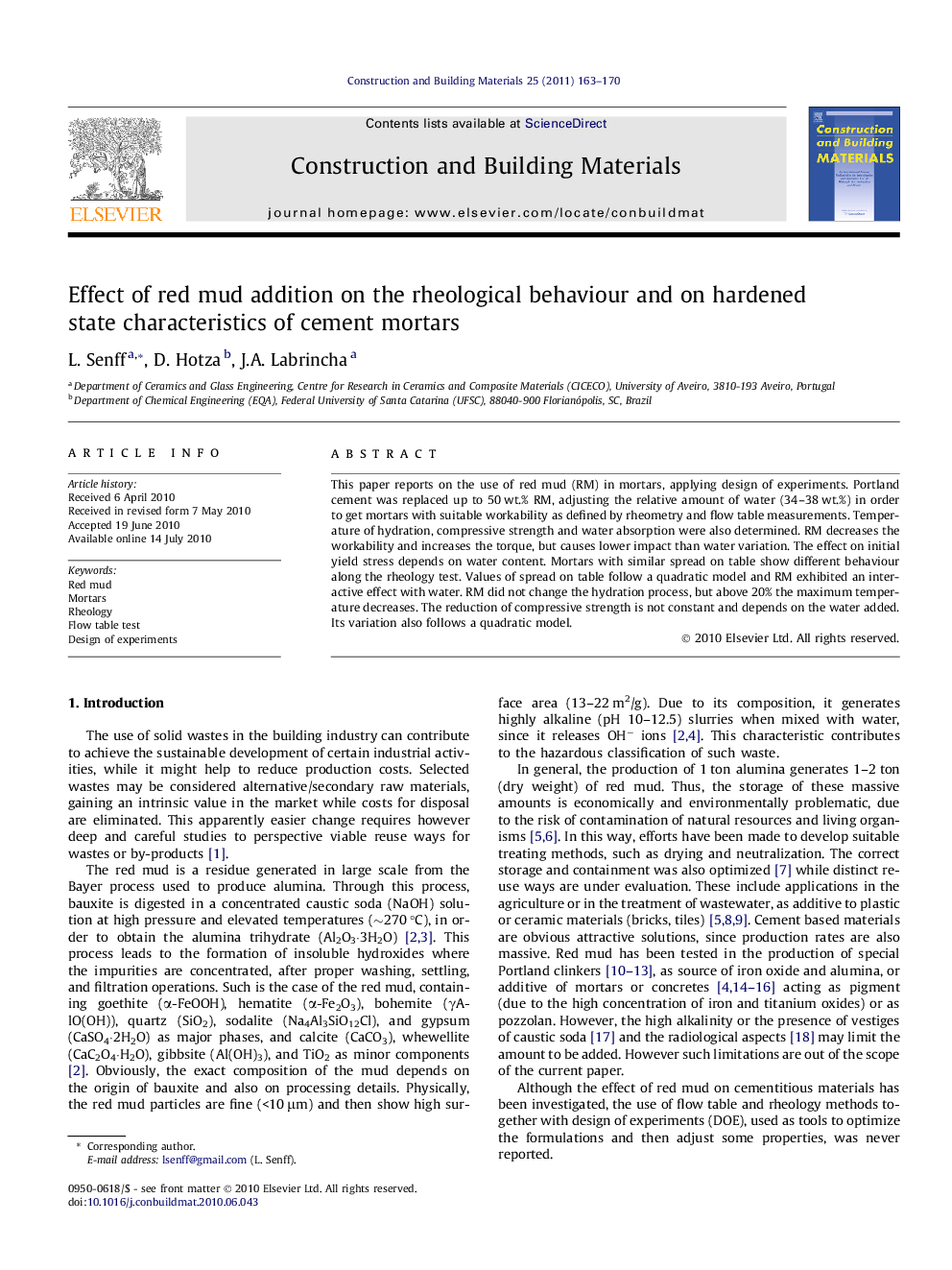| Article ID | Journal | Published Year | Pages | File Type |
|---|---|---|---|---|
| 260216 | Construction and Building Materials | 2011 | 8 Pages |
This paper reports on the use of red mud (RM) in mortars, applying design of experiments. Portland cement was replaced up to 50 wt.% RM, adjusting the relative amount of water (34–38 wt.%) in order to get mortars with suitable workability as defined by rheometry and flow table measurements. Temperature of hydration, compressive strength and water absorption were also determined. RM decreases the workability and increases the torque, but causes lower impact than water variation. The effect on initial yield stress depends on water content. Mortars with similar spread on table show different behaviour along the rheology test. Values of spread on table follow a quadratic model and RM exhibited an interactive effect with water. RM did not change the hydration process, but above 20% the maximum temperature decreases. The reduction of compressive strength is not constant and depends on the water added. Its variation also follows a quadratic model.
